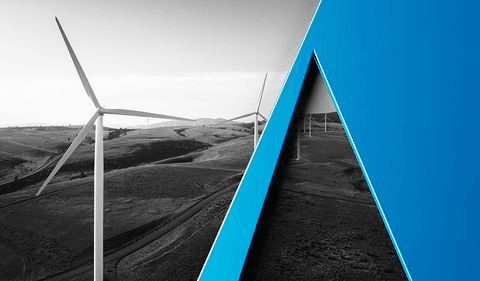According to Ceres, the food sector3 is responsible for one-third of global GHG emissions. Consistent with its “whole of government” approach to responding to the threats posed by climate change, the Biden administration has thus targeted the high-emitting food sector for climate-related policy: among other things, it has provided funding through the U.S. Department of Agriculture to encourage voluntary adoption of “climate-smart” agricultural policies and practices in certain states. And, of course, the food sector would not be immune from the proposed Securities and Exchange Commission (SEC) amendments mandating public companies annually disclose GHG emissions, including from upstream and downstream activities in their value chains.
Nevertheless, to date, according to Ceres, fewer than half of the 50 highest emitting food companies in North America have set short-term GHG emission reduction targets, and none have published a climate transition plan. As a result, Ceres published the Investor Guide as part of its broader “Ceres Ambition 2030” initiative to encourage decarbonization of six of the highest-emitting sectors in the U.S.4 The Investor Guide aims to provide “a common high-level agenda for companies to reduce emissions across the food supply chain.” It details sub-industry specific recommendations for the U.S. food sector, outlining proposed criteria for evaluating companies as they develop, disclose and implement climate transition plans.
According to the Investor Guide, climate transition plans should outline clear and concrete short and medium-term actions to achieve a company’s long term commitment and address climate change throughout the company, from growth strategy to operations. For investors, the Investor Guide identifies “red flags” in climate-related targets, plans and disclosures that could indicate that company is not responding adequately to mitigate emissions to reduce climate-related risk. For companies, these same “red flags” suggest opportunities to clarify and bolster climate-related disclosures to meet anticipated investor demands. We’ve summarized the major themes from the Investor Guide below:
Emissions Disclosure and Emissions Reduction Targets: A company’s emissions reduction targets should align with the science-based target of limiting global temperature rise to no more than 1.5 degrees Celsius. Additionally, companies should disclose their scope 1, 2 and 3 emissions throughout their business. Because scope 3 emissions make up a majority of a food company’s full GHG emissions profile, it is not possible to know whether a company is accounting for or addressing its major emissions if its disclosures cover only scope 1 and 2 emissions, or if it does not disclose a breakdown of its emissions sources. Similarly, disclosure or target setting for only a limited part of a business (such as just one product line or brand) provides an incomplete understanding of a company’s emissions profile.
Growth and Innovation Strategy: Action on climate-related risks and transition plans should be “embedded as a guiding force of a company’s corporate strategy.” Climate action should be integrated into a company’s core decision-making by ensuring clear and formal board oversight on these issues across the company’s portfolio of brands, subsidiaries, franchisees and other business units, including its supply chain. Companies should plan to reduce emissions not only in the creation of new products, but also in existing brands and services. It should be clear from disclosures how research and development, product development and capital expenditures impact overall emissions reduction goals.
Corporate Procurement Strategies and Supply Chain Implementation: A company should trace, assess and disclose emissions in its supply chain and engage with suppliers to reduce these emissions, such as by requiring supplier target-setting or offering supplier incentives. These policies should address the major sources of emissions in a company’s supply chain, rather than engaging only certain direct suppliers or only certain products, brands, segments, subsidiaries or franchises. If a company pilots a climate-related project, it should demonstrate evidence of intent to scale-up the project.
Operations, Waste, and Transportation: Plans to mitigate emissions must extend to operations, transportation and food loss and waste. A company’s new acquisitions and investments—such as company-owned agricultural lands and operations, food processing and manufacturing plants, and company-owned transportation and distribution—should align with its emissions goals. Food waste should be reduced, according to quantitative methods that can be tracked and disclosed, rather than simply diverted. At the same time, a company should not plan on only reducing operational or transportation emissions, while failing to reduce scope 3 emissions that may make up the majority of its attributable emissions.
A company’s failure to take the above steps should raise “red flags” for investors because not making climate action a guiding force in company decision-making “expose[s] companies to financially material climate risk and can lead investors to over- or underestimate the risks in their portfolio holdings.”5 Ceres encourages investors to engage companies to disclose climate transition plans and thereafter to keep on track to achieve ambitious, science-based emissions reduction targets. Finally, companies in the food sector, whether or not they have publicly adopted GHG reduction targets and other climate-related goals, should be prepared to explain to stakeholders, including investors, why they have not done so.
1 Ceres is a nonprofit organization that works with investors, companies and capital market influencers to solve sustainability challenges by integrating environmental, social and governance practices into business strategies. Through Ceres’s Food Emissions 50, investors are pushing 50 of the highest-emitting public food companies in North America to encourage the food sector toward a net-zero future. In connection with these efforts, such investors are seeking tangible commitments from these companies to improve their disclosures relative to their GHG emissions, as well as more robust disclosures regarding climate transition plans and the extent to which such plans align with the Paris Agreement. See Food Emissions 50, CERES, https://www.ceres.org/climate/ambition2030/food#about-the-initiative.
2 Available at https://www.ceres.org/resources/reports/investor-guide-climate-transition-plans-us-food-sector.
3 The Investor Guide covers agricultural products, food distributors, packaged foods and meats, food retailers, hypermarkets and supercenters, restaurants.
4 The six highest-emitting sectors in the U.S. are banking, electric power, food, oil and gas, steel and transportation. See Ceres Ambition 2030, CERES, https://www.ceres.org/climate/ambition2030?gclid=EAIaIQobChMIjrP198jD-AIVgtzICh1lCQVEEAAYASAAEgIBsfD_BwE.
5 See The Investor Guide at 14.



